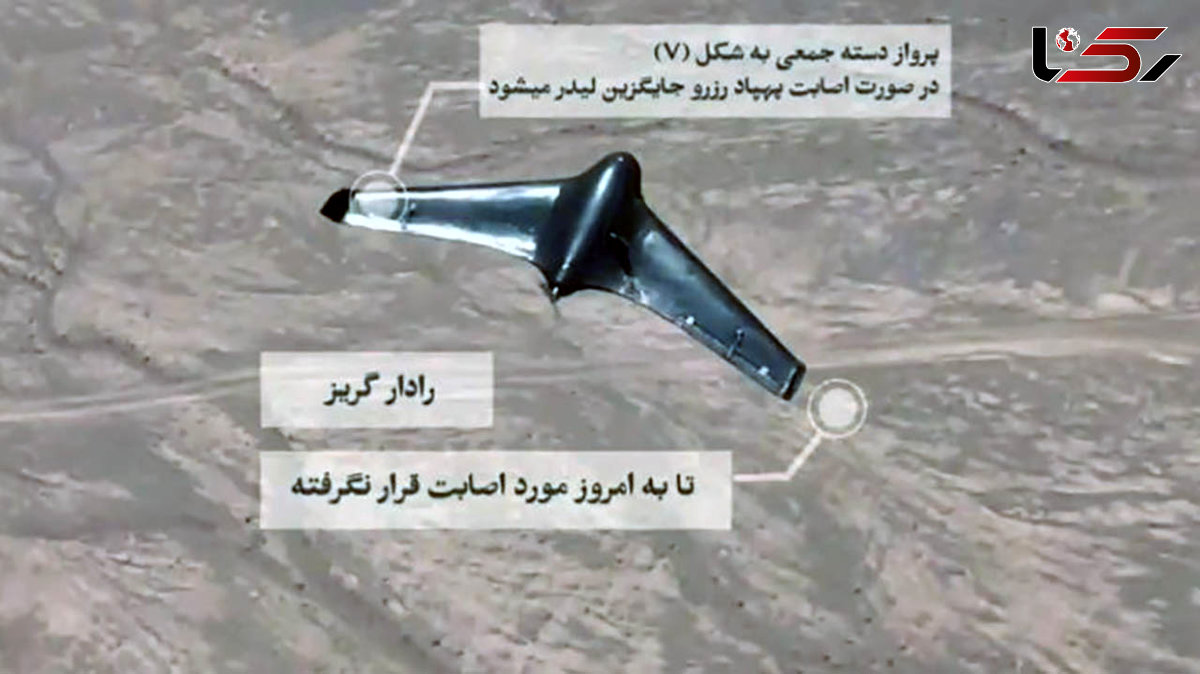A New Assassin of Enemy Commanders Enters the Battlefield
Rokna Political Desk: The unveiling of the “Simorgh” suicide drone by the Army Ground Forces marks the introduction of a new generation of collective flight systems into the combat organization. This drone, tasked with destroying enemy command posts, represents an important step in enhancing the offensive and support capabilities of the Army Ground Forces.

Over the past decades, particularly after the Sacred Defense, the Ground Forces of the Islamic Republic of Iran Army have embarked on a path of modernization and enhancement of capabilities, with a focus on advanced technologies. One of the prominent fields of this transformation has been the achievement of drone systems—an area that today has become a symbol of defensive self-sufficiency and operational authority for the Army.
In the beginning, the drones of the Ground Forces were primarily employed in reconnaissance missions and border surveillance. However, field experiences, operational requirements, and regional threats accelerated this process and pushed it toward the production of multipurpose drones with combat and suicide capabilities. Today, the combat organization of the Army Ground Forces is equipped with systems capable of long-range flights, identifying both mobile and fixed targets, and destroying them with high precision.
This transformation has not only reduced the dependence of the Ground Forces on traditional methods of operation but has also created a form of intelligent deterrence; deterrence that, instead of relying solely on the volume of fire, is based on speed, precision, and real-time intelligence. Today, drones, alongside tanks, artillery, and rapid reaction units, are an inseparable part of the operational identity of the Army Ground Forces, acting as the ever-vigilant eyes of the battlefield and playing a vital role in safeguarding national security.
Simorgh Drone; the Black “Octopus”
The Ground Forces of the Army recently unveiled a new suicide drone in a television program, named “Simorgh.” This drone has been designed with the capability of collective flight within a “swarm flight system” and can conduct group operations. Its flight formation is in a V-shape, enabling coordination and mutual coverage among the drones. In case the leader drone is struck, a reserve drone automatically replaces it, ensuring the mission continues uninterrupted.
The operational range of this drone is at least 5 kilometers, and depending on the type of piston engine used, it can reach higher speeds. Despite its small size and low production cost, this drone can be manufactured and deployed without limitation.
Its warhead has an approximate weight of two and a half kilograms, designed to destroy light vehicles, bunkers, observation posts, enemy artillery, troop concentrations, and similar targets.
Another important feature of this drone is its radar evasion and its ability to network in unlimited numbers within the swarm flight system; a capability that allows for the execution of complex and multi-layered operations without being identified or tracked by the enemy. With these characteristics, these drones play an effective role in enhancing offensive power and field support.
Simorgh; One Arrow, Multiple Targets for the Army Ground Forces
The unveiling of the “Simorgh” suicide drone demonstrates that the Ground Forces of the Islamic Republic of Iran Army have taken important steps in strengthening and diversifying their drone capabilities. The design of this drone, with swarm flight capability, network integration, and mass production, provides new capacities for conducting precise, swift, and intelligent operations for ground forces.
The enhancement of such capabilities signifies the elevation of the operational power of the Ground Forces in the areas of reconnaissance, assault, and field support. In fact, the introduction of modern drone systems not only increases the agility and flexibility of the Army but also establishes effective and intelligent deterrence against enemy threats. Thus, the strengthening of drones in the Ground Forces constitutes an inseparable part of the process of enhancing the overall power of this force and the defensive authority of the Islamic Republic of Iran.
Send Comments